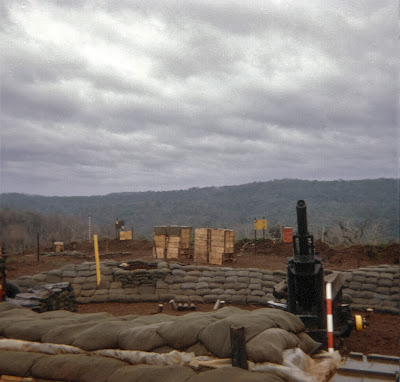 |
| Add caption |
Each of those two, 40 mm cannons on the turret fired high explosive rounds at a rate of 120 rounds per minute. Above the 40 mm barrels you can see that it had an M60 machine gun as well.
In 1952, when GM first started building them, it was designed to be an anti-aircraft gun. They were retired in the late fifties with the introduction of HAWK SAM missile systems. Only 3,700 were built. Duster's were sent to Vietnam for low altitude air defense but North Vietnam never did use aircraft. So we used them on unarmored enemy forces. I'm surprised we got away with firing the weapon directly at human beings. I would have thought the Geneva Convention would have had something to say about it.
I was surprised to learn that it required a crew of six men. The vehicle weighed 25 tons loaded. It was about 19 feet long, 10 feet wide and 9 feet high. A 500 horsepower gasoline engine could get it up to a top speed of 45 MPH. Finally it had a range of about 100 miles on a tank of gasoline.
I never did get to see one in action.


